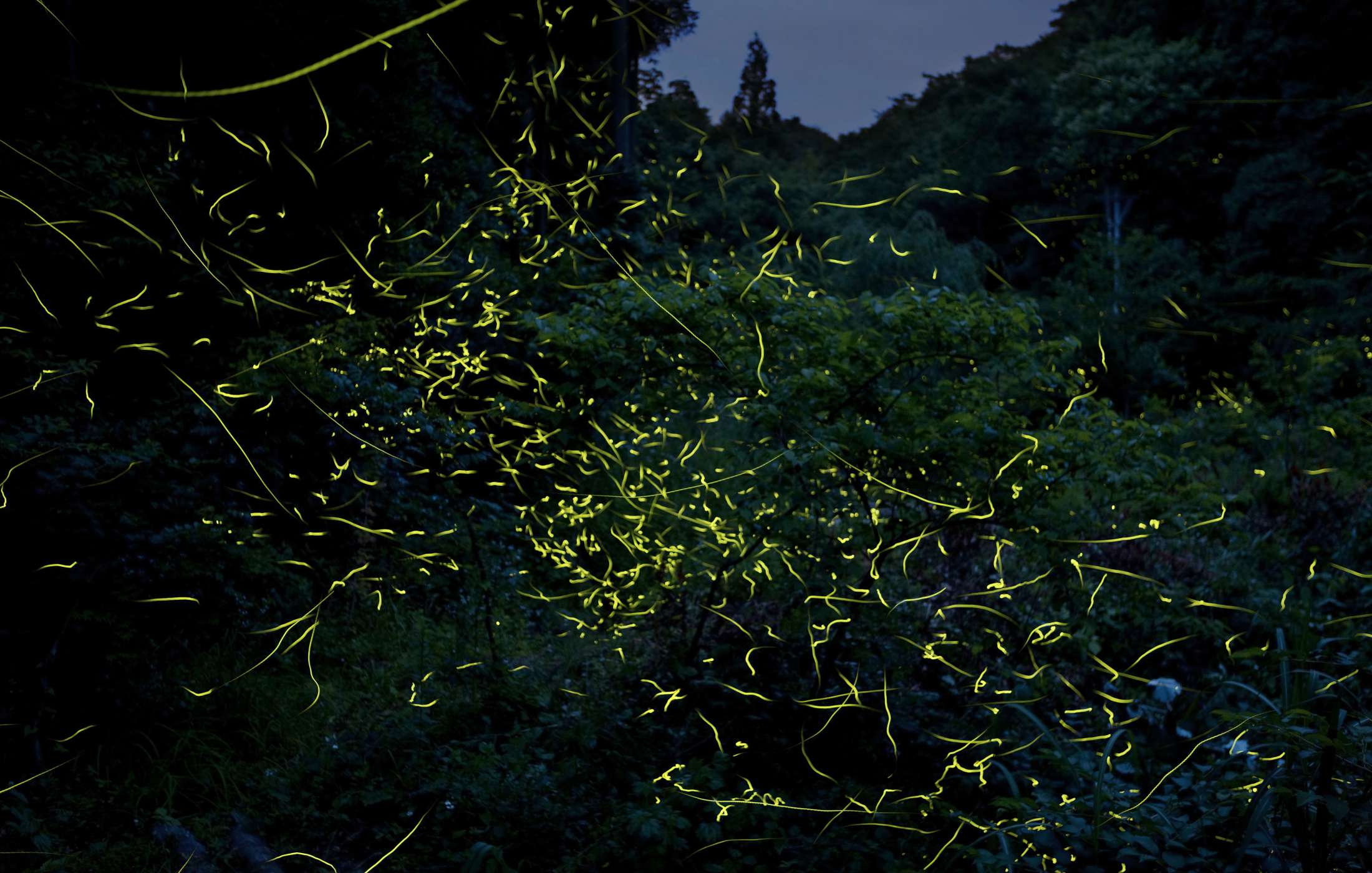
From the beginning of June to the middle of July, Japan experiences its rainy season. Humid days and sudden showers coincide with the appearance of a captivating early summer spectacle: fireflies.
Firefly viewing is a traditional Japanese summer activity that has been practiced for centuries. Japanese people have long held a soft spot for these tiny glowing insects, which occupy a special place in Japanese culture. They were used as a metaphor for passionate love in the Man’yoshu, an 8th century poetry anthology, but they also figure in recent popular culture such as “Grave of the Fireflies”, the classic 1988 anime film by Studio Ghibli.
Even today, the mesmerizing sight of countless pinpoint lights floating in the dark has the power to temporarily transport viewers back in time to an era before electricity and light bulbs, and remind us of the mysterious beauty of nature. Try it for yourself at one of the places below, which should all have the luminous little critters in residence until early or mid-July.
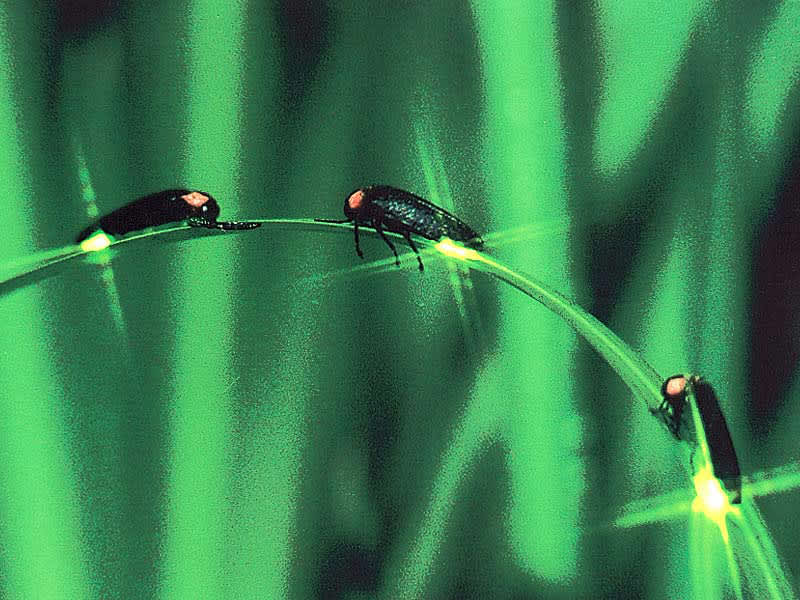
Japanese Fireflies: Peaceful Warriors
Over 45 types of firefly live in Japan, but only 14 of them have magical glowing bottoms. Of these, the two most common types are the Heike firefly and the Genji firefly - the Genji type is bigger and has a brighter glow than its smaller counterpart. Japanese history buffs may recognise these as the names of the two warring clans in the Genpei Wars of the 12th century. It is said that on dying in battle, the souls of the dead samurai turned into fireflies. The naming of the bigger and brighter variety as “Genji” perhaps reflects the clan’s victory over the Heike clan.
Despite their war-like names, Japanese fireflies only live and breed in peaceful places with rich nature and clean water, meaning they are less likely to be found in urban environments. Thus a firefly-viewing trip usually entails a visit to a river or paddy field in the Japanese countryside, or at the very least a large and leafy urban garden or park. The less light pollution there is, the clearer and more bright the fireflies’ ethereal glow will seem.
Fireflies come out at night between around 7:30-9:00 pm, and 20:00-20:30 pm is said to be the best time for viewing. It is said they are more likely to appear on humid days with no breeze and that they become most active, showcasing the erratic yet elegant dance for which they are known, just before it rains. When watching fireflies, be careful of using bright lights, such as smartphone screens and camera flashes, as they can disturb the fireflies and cause them to go into hiding.

Top Places to See Fireflies in Japan
1. Hotel Chinzanso, Tokyo
Hotel Chinzanso is one of the few places in Tokyo where you can witness the enchanting sight of fireflies darting about against a backdrop of big city skyscrapers. The fireflies are at their peak between mid-May and mid-June. Firefly-themed evening events will be held from mid-May to early-July to coincide with the firefly viewing season, including a dinner buffet, hotel packages, and a firefly-themed food menu. Visit their website for more details here.
Address: Sekiguchi 2-10-8, Bunkyo-ku, Tokyo 112-0014
Period: Mid-May to early-July
Firefly type: Genji firefly
Access:
Car: 5 minutes from Waseda Ramp (slip-road) on Metropolitan Expressway No.5
Train: 10 minutes walk from Exit 1a of Edogawabashi Station on Tokyo Metro Yurakucho Line. Or, 10 minutes by bus or taxi from Mejiro Station on JR Yamanote Line
2. Tsukiyono Firefly Village, Gunma
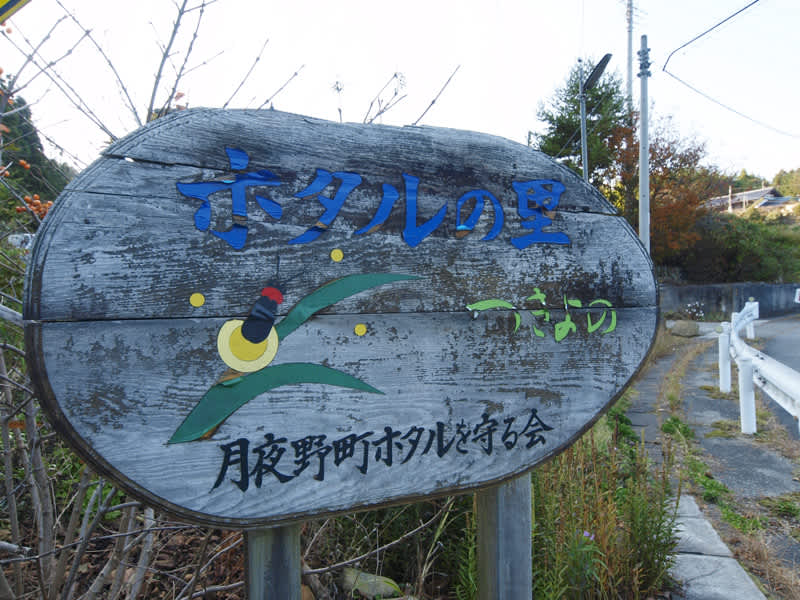
Fireflies have been known to gather in large numbers around the clear streams running through nature-rich Minakami town since long ago. For around one month from mid-June, thousands of fireflies will light up the early summer nights at Tsukiyono Firefly Village on the west side of Jomo-kogen Station. Firefly viewing is free of charge and takes place 8:00-9:00 pm.
Address: Tsukiyono, Minakami-machi, Tone-gun, Gunma prefecture 379-1313
Period: Mid-June to mid-July
Firefly type: Genji firefly, Heiki firefly, Kuromao firefly
Access:
Car: 10 minutes from Tsukiyono IC on Kan'etsu expressway
Train: 5 minutes walk from Jomo Kogen Station on Joetsu Shinkansen (bullet train) Line
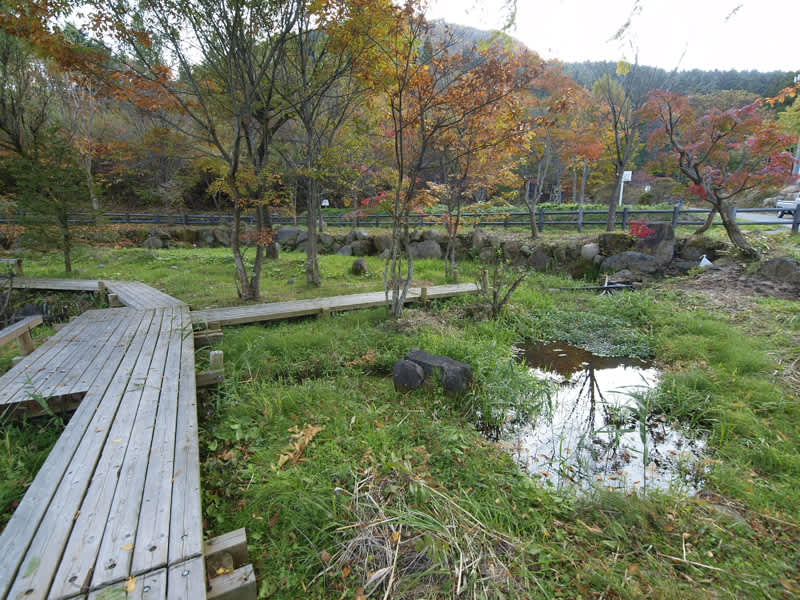
3. Roman-no Mori Kyowakoku, Chiba
A rare chance to witness fireflies living in the wild in the eastern Kanto region of Japan not far from Tokyo. Roman-no Mori Kyowakoku (which translates as 'Romance Forest Republic') is a leisure park consisting of 40,000 square metres of lush forests, just 90 minutes from central Tokyo. It offers family-friendly activities such as river-fishing, seasonal fruit-picking, BBQ, onsen (hot spring) and golf all year-round - and opportunities for firefly viewing in the summer.
Thanks to a long-term firefly breeding programme, tens of thousands of multiple breeds of firefly can be seen fluttering around during the firefly viewing period. Genji fireflies can be seen from late May until mid-June, while Heiki fireflies can be seen from mid-June until early July.
Period: Late May to early July
Firefly type: Genji firefly, Heike firefly, Hime firefly
Access:
Car: 22km / 25 minutes from Tateyama Road Kimitsu IC via Prefectural road No. 92 and National Highway No. 465 or 410
Train: 1 hour by Kamogawa Nitto bus bound for Kameda Hospital from the west exit of JR Kisarazu Station. Get off at 'Roman-no Mori Kyowakoku' bus stop.
4. Kemi Firefly Village, Nagano

The fireflies here are lovingly protected by the efforts of a local conservation group, who carefully maintain the waterways where the fireflies live and release the larvae every year. Watching the brightly-coloured gleaming trails left behind by the fireflies you’ll feel like you’ve been transported to another world. The annual Hanami Firefly Festival which runs from June 24th until July 1st is very popular.
Address: Aisome 2565, Ikeda-machi, Kitaazumino-gun, Nagano prefecture 399-8602
Period: Late June to mid July
Firefly type: Genji firefly
Access:
Car: 20 minutes from Azumino on Nagano road
Train: 10 minutes by taxi from Shinano Matsukawa Station on JR Oito Line
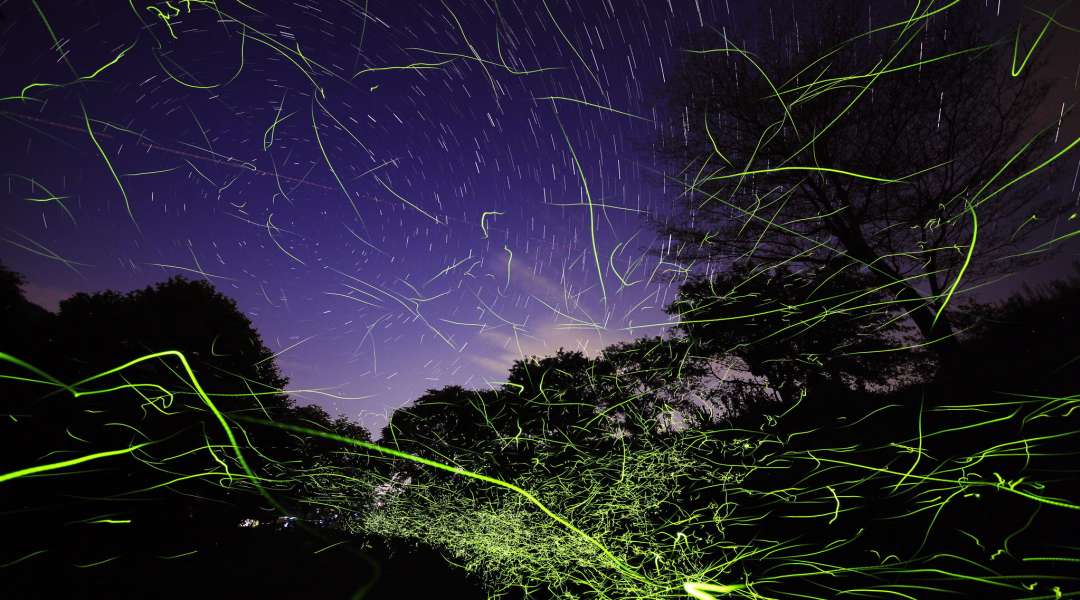
5. Nasu Fishland, Tochigi
Wild fireflies leave beautiful glimmering patterns as they cavort above clear streams flowing through Nasu Fishland, a woodland fishing resort with facilities for river fishing, BBQs and hot spring bathing two to three hours’ journey north of Tokyo.
Unlike many other places, Nasu Fishland does not carry out any firefly breeding programs, so you can rest assured that the fireflies you’re seeing are 100% wild and naturally-occurring. Temporarily leave behind the world of modern electric lights and allow yourself to be entranced by the gentle glow of these tiny yet amazing creatures as they zoom about in the pitch-dark.
Period: Mid to late July
Firefly type: Genji firefly, Heike firefly (both wild)
Access:
Car: 14km / 15 minutes from Kuroiso-itamuro IC on the Tohoku Expressway via Prefectural Highway No. 369
Train: 25 minutes by Higashino Bus bound for Itamuro Onsen from JR Kuroiso Station. Get off at JA Anazawa-mae bus stop and walk for 30 minutes or use the shuttle service (booking necessary).
6. Onnenai Wooden Path, Hokkaido

Allow yourself to be enthralled by the bewitching dance of countless wild fireflies living in the midst of rich natural surroundings in nature-rich Hokkaido. Onnenai is in the middle of Kushiro Shitsugen National Park (Kushiro Marshland), so you’re sure to be guaranteed unspoilt dark night skies which are perfect for seeing the fireflies’ natural bioluminescent glow at its best.
The firefly viewing spot is about 1km walk from Onnenai Visitor Centre. The Centre, which carries out various educational and conservation projects, was renovated in April this year. It is open from 9:00 am until 5:00 pm (closed on Tuesdays). Firefly viewing takes place 8:00-9:00 pm. However the wooden pathway that leads to the firefly viewing spot is accessible 24 hours a day.
Address: Onnenai Visitor Centre, Onnenai, Tsurui-mura, Akan-gun, Onnenai, Hokkaido 085-1145
Period: Mid-July to early August
Firefly type: Heikie firefly, diurnal Oba firefly (wild)
Access:
Car: 20km / 30 minutes from Kushiro city centre via Hokkaido highway no. 53
Train: 40 minutes by Akan bus bound for Tsuruimura Village from JR Kushiro Station. Get off at “Onnenai Visitor Centre” bus stop, 3 minutes walk
7. Seichi Park, Yomiuriland, Tokyo
Just 25 minutes by train from central Tokyo, with over 43 attractions, Yomiuriland is Tokyo’s largest amusement park. Top attractions include Bandit, a 110km/h rollercoaster through a forest, ferris wheel and bungee jumping, a kids-friendly make-your-own-car attraction, and a fashion-themed indoor roller coaster.
“Firefly Nebuta Evening” is held in Seichi Park inside the theme park’s grounds after the main park has closed from 7:30-9:00 pm on weekend evenings from June to July. To stay after hours and meet the fireflies, remember to buy a numbered ticket for the firefly event when purchasing your admission ticket for the main theme park.
Address: Yanokuchi 4015-1, Inagi City, Tokyo 206-0812
Period: Early June to early July
Firefly type: Genji firefly, Heikie firefly (some wild)
Access:
Car: 2 km / 10 minutes from Inagi IC on the Chuo Expressway. Or, 5km from Chofu City on the Chuo Expressway.
Train: 5 minutes by gondola from Keio Yomiuriland Station on the Keio Line. Or, 10 minutes by Odakyu Bus bound for Keio Yomiuriland Station from in front of Odakyu Yomiuriland Station on the Odakyu Line. Get off at “Yomiuriland” bus stop.
8. Fukkoshi area, Yokohama-machi, Aomori

The Genji fireflies and their habitat in Yokohama Town are the only designated natural treasure in Aomori prefecture. Firefly viewing is from 8:00 pm every night during the season. The firefly viewing area is located to the rear of the Fukkoshi Seikatsu Kaizen Centre.
At the “Firefly & Spring Water Festival” on 8th July there will be lots of fun events for all the family including a quiz, Japanese tea ceremony, raffle with prizes, coffee brewed from fresh spring water, mini fair stalls, flowing somen noodles (nagashi somen) - and of course firefly viewing.
Nagashi somen is a refreshing way of eating thin, glass-like noodles in summer. The noodles are served to diners by being slid down a long bamboo flume filled with ice cold water. Diners catch the chilled noodles with chopsticks as they slide down the flume and dip them in tsuyu dipping sauce before eating.
Period: Late June - mid-July
Firefly type: Genji firefly, Heike firefly (both wild)
Access:
Car: 1 hour 45 minutes from Hachinohe IC via National Highway No. 338
Train: 7 minutes walk from JR Fukkoshi Station
9. Oshima-ku Nigami Firefly Festival, Niigata
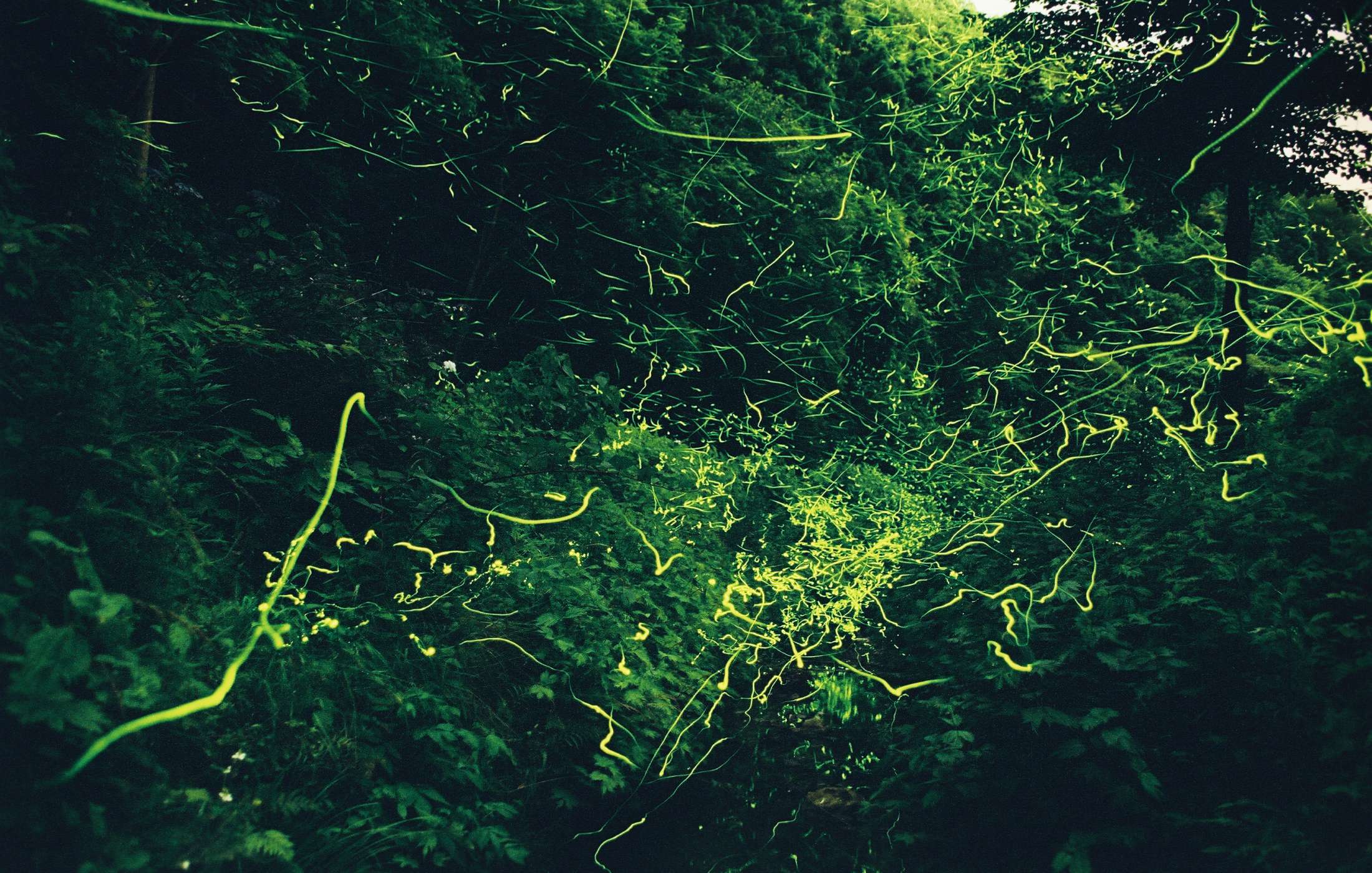
A 7 km-long stretch of Prefectural Road No.229 running along the Hokura River is home to so many fireflies that it has earned the nickname of “Firefly Line”. In early summer, clusters of wild fireflies that have grown up in colonies on the clear mountain streams can be seen flickering here and there, their glow reflected in the surface of flooded rice fields.
During the season, firefly viewing can be done all along this route. “Nigami Firefly Festival” is held in nearby Nigami Town from June 10th (Sat) to July 8th (Sat) 8:00-9:00 pm. The route gets very crowded on Saturdays, so it is advisable to buddy up when travelling and/or visit on a weekday if you can.
When you visit make sure to park your car and use the nearby purpose-built Firefly Viewing Platform, as car headlights and hazard lights can endanger the fireflies, who are attracted to the bright light but can become disoriented and unable find their way back to their home in the paddy fields.
Period: Mid-June to mid-July
Firefly type: Genji firefly, Heike firefly (both wild)
Access:
Car: 28 km / 50 minutes from Joetsu IC on the Hokuriku Expressway via National Highway No. 253 and Prefectural Highway No. 13
Train: 10 minute taxi ride from Hokuhoku-Oshima Station on the Hokuetsu Express Hokuhoku Line


















































